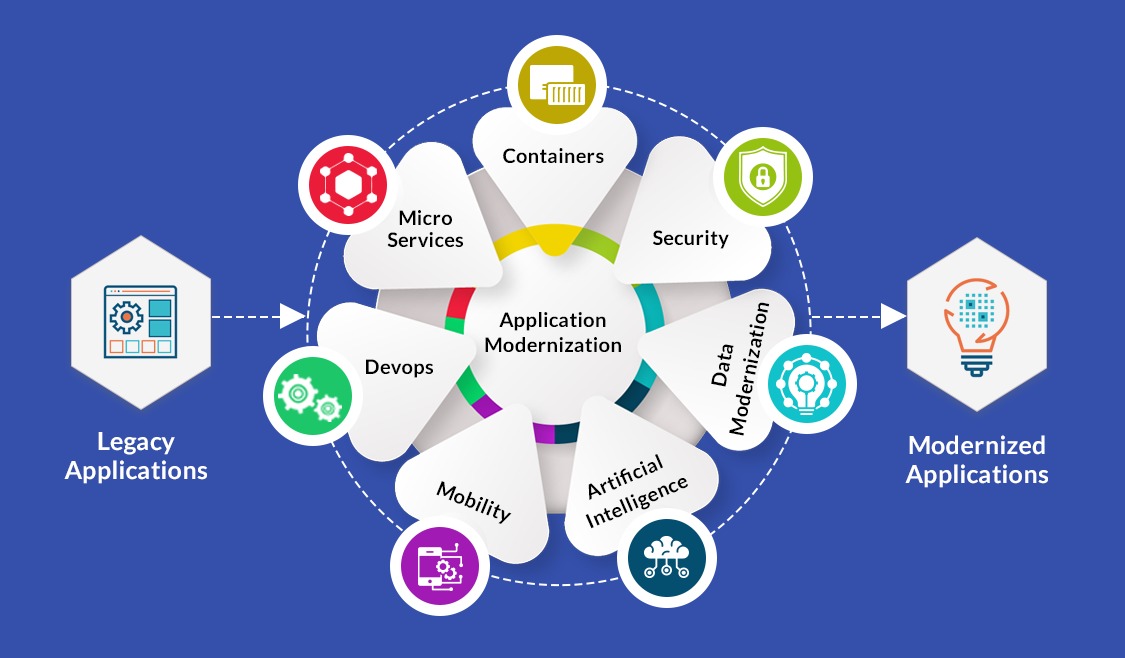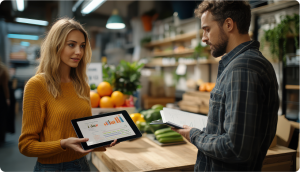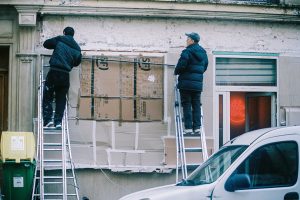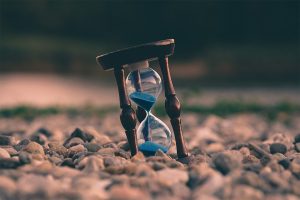
Modernizing outdated systems is crucial for businesses aiming to adapt to evolving technology and maintain a competitive edge. Whether it’s enhancing efficiency, improving security, or scaling operations, legacy system modernization strategies enable organizations to overcome limitations and unlock new opportunities. By exploring tailored approaches, companies can transform their existing infrastructure without losing the core value it provides.
Inside this Article
Toggle- What is a Legacy System?
- What is a Legacy System Modernization?
- Why You Should Modernize Your Legacy Systems?
- 7 Broad Legacy System Modernization Strategies
- Real-World Example of Legacy System Modernization
- Choose the right Approach to Modernize your Legacy Systems
- Frequently Asked Questions
- 1. What are the 7 R’s of modernization?
- 2. What is the difference between replatforming and rehosting?
- 3. How long does it take to modernize a legacy system?
- 4. What are the risks of not modernizing legacy systems?
- 5. Can legacy systems be modernized in phases?
- 6. What are the benefits of adopting a cloud-based solution for legacy system modernization?
- 7. How do I choose the right legacy system modernization strategy for my business?
- 8. What should businesses consider when planning legacy system migration?
What is a Legacy System?
A legacy system is outdated software or hardware that businesses continue to rely on, even though it no longer meets modern technological standards. While these systems were once essential for operations, they often lack the necessary security features and advanced capabilities needed to address current business challenges. As businesses evolve, sticking to these systems can hinder growth and leave organizations vulnerable to modern risks. Without modernization, businesses may fall behind more agile competitors leveraging newer technologies.
What is a Legacy System Modernization?
Legacy system modernization is the process of updating outdated software or hardware to meet current technological standards and business needs. As businesses evolve, their internal systems must also adapt to new challenges, improved security, and opportunities that modern technology offers. Modernizing legacy systems involves transforming or upgrading them to improve efficiency, scalability, and security, ensuring they remain relevant in today’s fast-paced environment. By adopting a legacy system modernization strategy, businesses can retain valuable features while incorporating the latest technology to stay competitive and meet the growing demands of their industry.
Why You Should Modernize Your Legacy Systems?
The key to success for any business is to keep up with innovations and modernize rapidly. This is the only way to ensure businesses outperform competitors and continue to delight customers. In this race to scale up, a company’s internal software can either be a hindrance or a key driver of growth. Most companies today rely on legacy software that is often developed internally and built along rigid frameworks. These software’s also require regular maintenance by a specialized IT department. The financial and technological restrictions legacy software pose can often compel businesses to consider leaving them behind entirely in favor of newer more agile options available in the market.
An ‘all or nothing’ approach can come with its own set of drawbacks. Legacy systems often have decades of invaluable data stored on them and an entire company’s processes are built around them. Removing them completely can disrupt your existing workflow and could even cause data lapses if the migration is not done correctly.
If you’re unsure whether it’s the right time to modernize your legacy systems, read our blog on the 5 Signs It’s Time to Modernize to help guide your decision-making process.
A far more practical legacy system modernization strategy would be to consider an application modernization in a phased manner and retain as many of the useful features of the current software as possible.
7 Broad Legacy System Modernization Strategies
Legacy system modernization typically involves performing a complete audit of the current software, identifying gaps and understanding how new features can be integrated within the framework. The objective behind legacy system migration is to make this process as frictionless as possible for all users and to minimize training requirements for adapting to the new process. In general, there are seven broad legacy system modernization strategies.

1.Encapsulate
In this strategy, the code, while still remaining in its present environment is linked by API to a new presentation layers. This basically means that the monolithic code is being broken up into microservices or smaller capsules. This strategy enables modular programming, debugging and allows application code to be reusable through APIs across multiple projects. In the long run each microservice can be built updated individually.
Encapsulation can give your legacy software a facelift and make it easier to use, but many of the inherent challenges with using the older software do not necessarily get resolved. If maintenance caused prolonged downtimes and added to costs, these problems will continue to persist since the actual process and code remains unchanged.
2.Rebuild
This strategy recommends to completely rewrite application components using new languages and technology stacks while retaining the exact same scope.
Generally, this strategyinvolves redesigning legacy systems to allow for cloud migration integrating it with other systems through APIs. To do this, companies require a highly-specialized IT team and set aside considerable time for the project to be completed. The end result is that the legacy system retains its previous functionalities and purpose but in a new, modern avatar that can leverage the advantages of being on the cloud.
3.Replatform
Re-platforming is one of the more conservative legacy system modernization approaches where developers move certain features of the system to a different, modern runtime platform. In this strategy, only minimal code changes to adapt to the new platform are required. Many of the same features and tools of the old system are still retained so teams who work on the software do not need to change their processes.
4. Rehost
In most cases, not being able to work on the cloud is one of the main reasons that push companies to modernize their legacy systems. In this ‘rehosting’ approach, companies continue to keep their existing ERP dashboards and legacy software’s but move the environment from an offline one to a cloud-based one.
This is one of the best legacy system modernization strategies to save on time and costs. The only drawback to doing this is that many useful features that are exclusive to the cloud, which boost performance and save even more on costs, might not be available if you’re simply moving existing software to a new environment.
5.Rearchitect
This strategy to legacy system migration combines the best of both worlds. The current legacy system is first segregated into layers. Layers that would benefit from migrating to the cloud or integrating new features are re-coded and modified. The remaining layers are either retained as they are, or are minimally modified.
In cases where a data breach is the biggest concern, the data alone might be migrated to a secure cloud platform, while the rest of the legacy system remains unchanged. In cases where performance and efficiency are an issue, parts of the code might be optimized to improve speed.
6. Retain the existing system
When undertaking a legacy modernization drive, companies usually weigh the cost-benefit outcome of such a change. In most cases, the benefits of moving to a newer updated framework far outweigh the short-term costs or teething troubles an organization faces. However, in certain instances, moving to a new system might not be an immediate necessity. For instance, if the organization is going to be sold soon, participate in a merger or is awaiting a change in leadership, a long-term vision might not make sense.
However, it is important to remember that whatever the short-term obstacles are, moving to a modern updated system will still remain a necessity. In fact, the longer an organization delays modernizing their legacy software, the harder it can become to do so.
7. Retire the old system
If your organization’s business model is changing, then the existing processes that the legacy software supports might not be required anymore. In this situation, your company might either choose to develop a new in-house system to cater to your new requirements or choose a third-party cloud-based solution.
This is the most drastic technique to modernization and is required only when existing systems are irreparably outdated. In these cases, the legacy system does not conform to current compliance or technological standards and its framework does not support new coding or upgrades. When this happens, the system could actually become a liability to companies as data leaks or hacking could become more likely. When a more suitable cloud-based system is selected, the company’s IT system needs to carefully plan the legacy system migration to ensure that it happens seamlessly with minimal data loss. Employees will also require extensive training to help them adapt to the new software and use it correctly.
Real-World Example of Legacy System Modernization
An excellent example of applying modernization strategies is our work with CMRL, where we successfully transformed their technology by integrating features like a mobile app for commuters and automation of services for last-mile connectivity. Learn more about how we helped CMRL modernize their systems here.
Choose the right Approach to Modernize your Legacy Systems
When choosing among the best legacy system modernization approaches for your business, it’s important that you first assess your requirements and level of technological maturity. If the existing system is too tightly enmeshed with your current processes, then phased out legacy system modernization strategies might help you save on costs and make it easier for users to adapt to the new workflow.
If you’re planning to modernize your legacy software, then schedule a free consultation with our tech experts through our chat here to know which is the best modernization strategy for your legacy system.
Frequently Asked Questions
1. What are the 7 R’s of modernization?
The 7 R’s of modernization refer to strategies used when transitioning legacy systems to modern systems: Rehost, Replatform, Rearchitect, Refactor, Rebuild, Retain, and Retire. Each strategy helps businesses decide the best approach to upgrade or transform their systems based on their unique needs.
2. What is the difference between replatforming and rehosting?
Replatforming involves moving certain features of a legacy system to a more modern platform with minimal code changes, while rehosting simply migrates the existing software to a cloud environment without making significant changes to the system itself.
3. How long does it take to modernize a legacy system?
The time it takes depends on the complexity of the system and the chosen modernization strategy. A complete rebuild might take months, while less extensive updates like replatforming or rehosting may take less time.
4. What are the risks of not modernizing legacy systems?
Failing to modernize can lead to security vulnerabilities, inefficiencies, and challenges in integrating with newer technologies, ultimately causing businesses to fall behind competitors and increasing the risk of data breaches or system failures.
5. Can legacy systems be modernized in phases?
Yes, phased modernization allows businesses to retain valuable features of the legacy system while integrating new technologies gradually. This minimizes disruption and makes the transition smoother for users.
6. What are the benefits of adopting a cloud-based solution for legacy system modernization?
Cloud-based solutions offer scalability, cost savings, improved performance, and better security. Migrating legacy systems to the cloud can provide access to advanced features and ensure that businesses can easily scale their operations.
7. How do I choose the right legacy system modernization strategy for my business?
The right strategy depends on factors like the complexity of your current systems, business goals, budget, and timeline. It’s important to assess your specific needs and consult with experts to determine the best approach for your organization.
8. What should businesses consider when planning legacy system migration?
When migrating legacy systems, businesses should consider the potential impact on workflows, ensure data integrity, plan for employee training, and choose a strategy that aligns with their long-term goals and technological capabilities.










